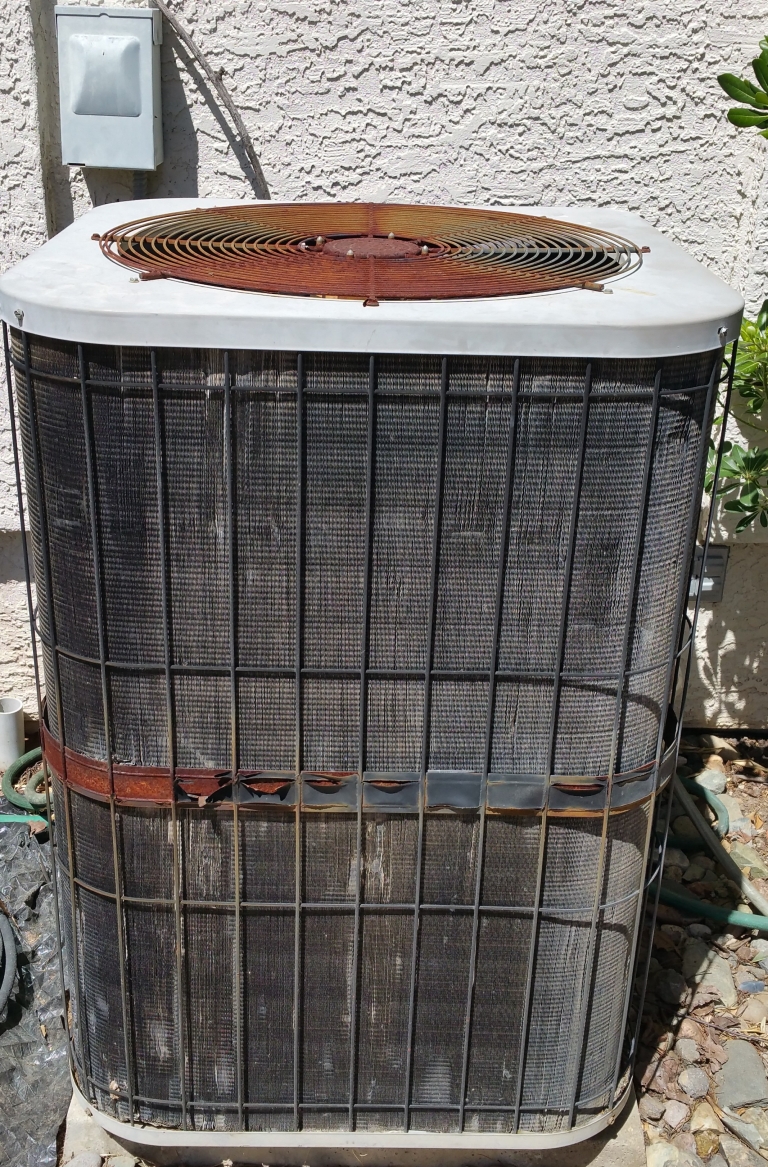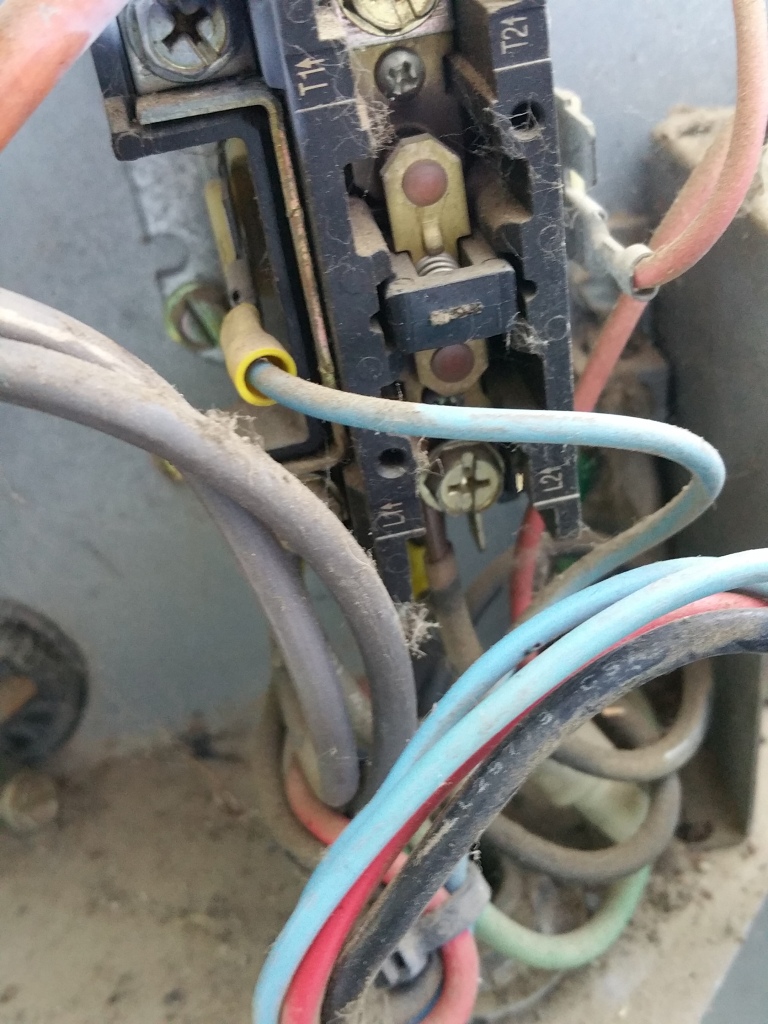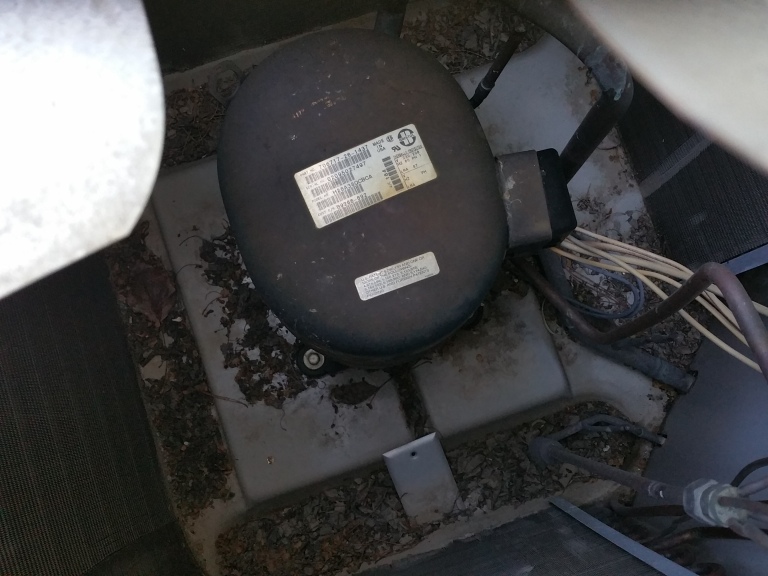It was 102 degrees Fahrenheit yesterday.
The first century temp here in our little corner of Northern California. We have relatively dry weather here, so we don’t sweat as much as other humid locales. But it’s still hot. Summer is finally here.
In the house, we set our thermostat to 82 degrees – the recommended temperature for energy savings. It’s still shorts and T-shirt to be comfortable, but with the ceiling or desk fan on, it feels like walking by a lake in the middle of spring, the soft air gently running on your skin, and a cool breeze caressing your face.
That is, if the air conditioning is working. But with a 25-year old central A/C unit, it can be touch and go. I’ve replaced the start capacitor for this unit twice in the last several years, the last one just two years ago. (If the outdoor fan isn’t spinning, and you hear a whining noise, turn off the A/C and replace the capacitor, which is a straightforward procedure. You can check YouTube vids of course!) The capacitor costs around $20.
When this happened the first time, I called a HVAC tech who promptly replaced the said capacitor, and charged me $370! A sucker, I thought that was what I paid for the knowledge. This was in early 2000, so the Internet was starting up, and DIY instructions were very much in text. So the unit is on its 3rd capacitor.

Yesterday, when the temp outside started climbing up to the 90s, we were getting hotter than usual inside. The thermostat read 86 degrees, way over the setting, although the fan outside was working. I checked and rechecked that the fan was working, as I readjusted (more like twiddling, since I didn’t know what else to do) the thermostats – one on the first and the other on the second floor. I would peer down from the second floor window, to check if the fan of the AC unit outside was still spinning.
It was, and very quietly. What I mean is that the condenser unit (the name for the AC box of metal outside) had the fan spinning, but no other noise. Mind you, our ancient AC would groan like an old man rising up to stand from his favorite armchair, when it starts up, do its deed to cool down the house. This time, it was running like a well-oiled motor, no other noises!
The compressor – ours is the big black cylindrical piece inside the unit – was eerily quiet and seemingly dissociated from the proceedings. Usually this jars itself awake and grumbles from the disturbance. It seemed dead to the world. Still I ordered the capacitor from Amazon last night, scheduled to arrive today. Changing the cap is the only thing I knew to do.
This morning, I heard from the morning news that the forecast is several degrees hotter than yesterday, so in an effort to avert any cries of despair in the house, I resolved to fix our air conditioning, whether I replace the defective capacitor (which I hope is the case, since this was my only shot) and save the day, or call a technician and save the day (but spend thousands, and not save our savings).
So I removed the small metal cover of the control box of the unit, by removing five screws, as in to replace the capacitor, which looks like a tin can. Amidst the tangle of colored and dusty wires in that small box, I was hoping that the cap is bulging, a sure sign that it needs replacement. I saw a shiny metal can, attached and hanging proud in the box. Alas, the capacitor looks clean and new, just like the condition when I installed it two years ago.
It’s not that.
In the moment of near despair, I looked at the contactor – another part which I learned is the main switch in the box, that controls the fan and the compressor. The contactor has several large wires coming out of it, of various colors, snaking their way around the small space, seemingly complicated, and warning all who come near. I did not want to mess with this, although I thought I should, if I want to truly troubleshoot the situation.
I learned later that the contactor switch is one of the common things to break in an AC unit, apart from the capacitor. Perhaps I can learn one more skill and save the day.

It’s then that I noticed a wire floating out of place. A thick gray-black wire that had a burnt end, a metal piece chewed into half by an invisible fire. This connector, or what’s left of it, should be attached to one of the contactor leads, just like another black wire, all intact. This provides me with a model to follow, as I noticed a couple of red wires, both intact, connected to the other side of the contactor.
So it seemed logical for this black singed wire to also connect beside its brother, across its red counterparts. It would be easy enough to replace the burned metal connector, and reattach it to the lead of the contactor. Now that’s the plan.
Knowledge is power, or at least, it can save a trip to the hospital. So it is prudent to learn a little bit about this part. I rummaged through a series of videos and articles on-line about replacing contactors and how they work. The worst scenario is for me to order a replacement contactor and reattach the myriad of wires. Seems easy enough.
But I still have to clean the burnt end, splice the wire, and crimp a “disconnect” metal connector piece onto the black wire. I was hoping that this action will fix the problem, without me replacing the part. So I would need to head to a large box store, and purchase this small piece of metal.
Before fixing the wire end, however, I must ensure that I will be alive to tell the tale, or finish this story. So I pull out the fuse to the AC unit, and that of the main breaker box. I took a long breath, and held the forlorn looking piece of wire hanging out of the control box.
The wire’s end part was already gray, with a vertical slit, almost a gap, probably caused from the heat, showing many twisted strands of copper forming one thick gauge of wire. I took the wire cutter, held it firmly, and carefully snipped the end, with the half-eaten metal connector with it. I kept this part in my pocket and drove to a large box store. There I bought a $3 box of metal connectors, even if I only needed one piece. Of course, you can only buy in groups of ten, economical for most, but not to me at this point, so I reached out to grasp the small box hanging from a rod off the wall of electrical connectors and components, and checked out of the store.
Back now in the backyard, I chose a small “disconnect metal connector” piece and slipped it on the exposed wire end, which had the burned metal connector a while ago. So in effect I am just replacing the connector and making sure there is contact, and that there will be no exposed part of the wire, to prevent any shorts. So after crimping the “neck” of the new connector to fasten the connector to the wire, I rolled a small piece of electrical tape onto it. Then I gingerly inserted it onto one of the four metal plates, standing at attention on the contactor. One was already burned and melted into a stump, another looked burned too, so I chose one that looked untouched, hoping this will not burn anytime soon.
Time to test this simple fix.
So in a series of steely steps, I placed the cover back on, and screwed it shut. I reinserted the AC fuse back onto the box, and walked to the main breaker box on the other side of the house, and flipped the switch to the AC. Then with a big heave of the chest, I turned on the two thermostats by moving the switch to COOL. I then ran out to the backyard.
The noise was almost deafening. The fan spun and a loud groan, followed by a gurgle and a shudder emanated from the AC unit, like a power generator coming back to life after a period of lengthy inanimation. Music to my ears – the compressor is working!

I ran back into the house, moved a chair under a vent, stepped on it, and placed my hand under to feel the cool air struggling to come out, amidst the hot climate in the room. Nice. Mission accomplished: a few thousands saved, and a couple of faces happy, at least until the next fire drill and the next repair project.
As I stepped down the chair, I noticed a package on the table. It’s one of those bubble-wrapped envelopes, ordered and shipped overnight for fear of a hot house, a promise to fix all of our air conditioning woes, really a savior of sorts. Amazon. Must be the new capacitor for the AC, impatiently waiting for its moment of recurred glory.
I took the package and brought it to the cabinet in the garage, hoping to remember it when the next adventure with the AC happens next year, or the year after…I hope.










